Combat ships. Cruisers. Tins you better not mess with
These heavy cruisers became the first clean "Washington" cruisers in the Navy of Great Britain and Australia, as two of the seven ships were transferred to the Australian the fleet.
The naval ones called these cruisers "tin cans" for their very weak armor, but in fact these representatives of the "County" family were quite decent weapons... The weakening of the reservation resulted in a simply huge cruising range of the Kent-class cruisers, which became a very strong point of these ships.
The Kent-class heavy cruisers were the first British cruisers designed, rather than adapted, under the Washington Agreement.
The main purpose of the ships was to protect sea communications, capture and destroy enemy raiders, long-range reconnaissance for the main forces of the fleet, as well as, if necessary, perform other combat missions, independently or as part of a group.
Naturally, it was unrealistic to create such a versatile heavy cruiser within 10 tons of displacement, so the cruising range, seaworthiness and living conditions (luxurious compared to many other cruisers) were improved due to the reservation, speed and partially armament.
The cruising range was simply excellent, in this "Kents" overtook both the Americans and even the Japanese. But this is due to the fact that, first of all, these ships, which began to be developed during the First World War, were planned as interceptors of the German raiders, which badly damaged British shipping.
Therefore, the Admiralty came to the conclusion that it was necessary to build a decently armed cruiser with great autonomy and conditions for the crew during long voyages.
The design was based, naturally, on the Hawkins, but with a linear arrangement of the main battery guns.
Several projects were reviewed. We chose the so-called project "Z", the work of Sir Eustace Tennyson d'Eincourt, which still had to be improved towards increasing the stroke, reducing the reservation and ammunition. From the ship aviation I had to refuse altogether.
In general, the project was redesigned very radically, which took time and nerves, but after its approval, the Admiralty decided to order 17 ships at once. However, civilians intervened and severely cut the budget. And the order was limited to 8 ships in 1923, and in the next to 4 cruisers altogether. Then another ship was added. A total of five.
Australia really wanted to get such ships at its disposal and ordered two cruisers. As a result, 17 remained from 7 ships. The prototype was named after the county of Kent, the whole series was named in the same way.
They began to build the cruisers in 1924, they entered service in the first half of 1928.
Kent, Berwick, Cornwall, Cumberland, Suffolk and Australian Australia and Canberra.
On tests, the ships showed very good results, all ships exceeded the design speed by one knot, which made everyone very happy. True, I immediately had to make improvements. It turned out that smoke from rather low pipes completely obscures the view of the stern fire control post and the anti-aircraft battery of 102-mm station wagons. The pipes were extended to 4,6 m, and the Australians on their ships up to 5,5 m.
Reservation
The wild economy of weight in order to enter the "negotiated" displacement, led to the fact that in the usual form of side armor on the ships was not at all. A so-called local reservation system was used, which was a protection around vital compartments, which were contained in an armored box. Such places became towers, engine rooms and artillery cellars.
The engine room was closed on the sides with 25-mm plates, at the ends - 38-mm, on top - with a 35-mm deck. The tiller compartment had 25 mm armor on the sides, and 38 mm on the top.
The cellars of the towers "A" and "Y" (the first and last towers) had a wall thickness of 25 mm.
The cellars of the towers "B" and "X" had a side wall thickness of 111 mm, the front, rear and top walls were 76 mm thick.
The turrets of the main caliber were armored in a circle with 25 mm armor. The same armor covered barbets and rooftops. The floor was thinner - 19 mm.
In general, the booking was more typical for light cruisers, and it was not for nothing that these ships were called "tin cans".
Power plant
Eight boilers of the Admiralty type supplied steam to four TZA, which turned four shafts with screws. The turbines, of course, were from Parsons. Power plant capacity 80 hp
The stock of oil in the tanks was simply enormous for the cruisers: 3200-3300 tons. It allowed ships to have a cruising range of up to 13 miles at an economical speed of 500 knots. In combat mode at a speed of 12 knots, the range was about 30 miles.
Crew
The cruiser's crew consisted of 685 people, the flagship - 710-715 people. Compared to classmates, on the Kent-class cruisers, great attention was paid to the accommodation of the crew and their service in hot climates. The cruisers had very spacious and ventilated crew quarters.
weaponry
Main caliber
The main caliber artillery consisted of eight 203 mm BL Mk VIII guns housed in four hydraulically powered twin Mk I turrets. The towers were located in pairs, linearly elevated in the bow and stern.
The main guns were designed for 550 rounds of 116-kg shells at a range of up to 28 km. Combat rate of fire 3-6 rounds per minute. The towers were rotated by hydraulic drives, vertical guidance was carried out by electric motors.
Elevation angles of 70 degrees made it possible to fire barrage at air targets. In theory.
The ammunition capacity of 150 rounds per barrel (in wartime, in peacetime - 100) consisted of semi-armor-piercing and high-explosive shells.
Auxiliary / anti-aircraft artillery
All the auxiliary artillery of the cruisers was concentrated in one place: on the anti-aircraft artillery platform, which was located not far from the midship. Two guns were located on either side of the third chimney, and two were behind them towards the stern.
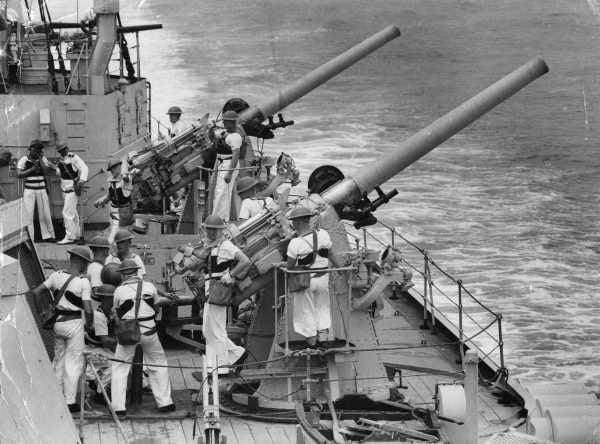
The 102 mm QF Mk.V guns were placed on open Mk III machines. The gun had a single unitary ammunition supply, the ammunition was fed manually. The vertical guidance angles were in the range from -5 ° to + 80 °. Rate of fire - 14 rounds / min., Muzzle velocity 728 m / s., And maximum firing range up to 15 m., Ceiling - 000 m.
It was planned to install on ships 40-mm machine guns from "Vickers", the very "Pom-poms" in a four-barreled or even eight-barreled configuration. However, the plans did not succeed and four Vickers QF Mk II 40-mm single-barreled guns were installed on the platforms between the first and second pipes.
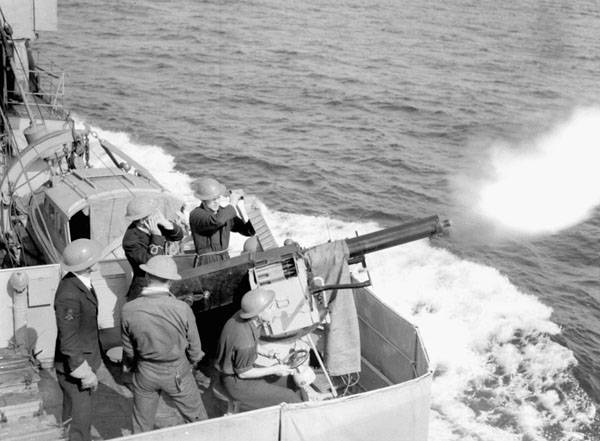
Guidance was carried out manually, the machine tools of the guns made it possible to work in the range from -5 ° to + 80 °, power was supplied from belts for 14 shells. Ammunition was 1000 rounds per barrel.
As a makeweight and, possibly, for boarding or inspection operations, the armament included up to 12 Lewis machine guns with a caliber of 7,62 mm.
Mine torpedo armament
Two four-tube torpedo tubes with a caliber of 533 mm were located under a platform with anti-aircraft guns. The ammunition load consisted of 8 torpedoes, there were no spare, and reloading at sea was not planned.
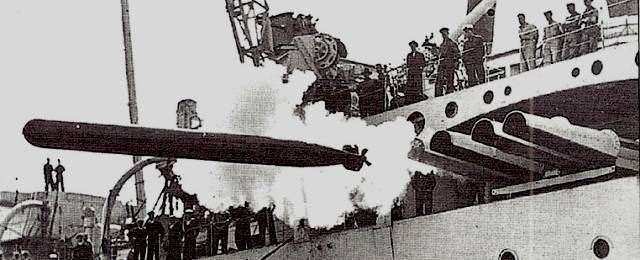
Launching a torpedo from Canberra
The Mk V torpedo had a warhead of 227 kg of explosives and could travel 12 km at a speed of 25 knots or 4,5 km at a speed of 40 knots.
Aircraft Armament
It turned out to be interesting with aviation armament. Initially, it was not planned at all, but it became clear to everyone in the Admiralty that a raider hunter without a seaplane would not be a full-fledged ship. Therefore, as soon as it became clear that the ships had a reserve of displacement, then in the process of modernization during 1930-32, all cruisers, except for "Kent", received a light sliding catapult Slider Mk II Light on board. A folding catapult of the FIL (Folding Mk I Light) type was first installed on the Kent as an experiment, and in 1932 the Slider Mk II Light was installed instead.
To lift the aircraft and install it on the catapult, two cranes were installed on the starboard side. The reconnaissance aircraft was assigned to the Fairey IIIF.
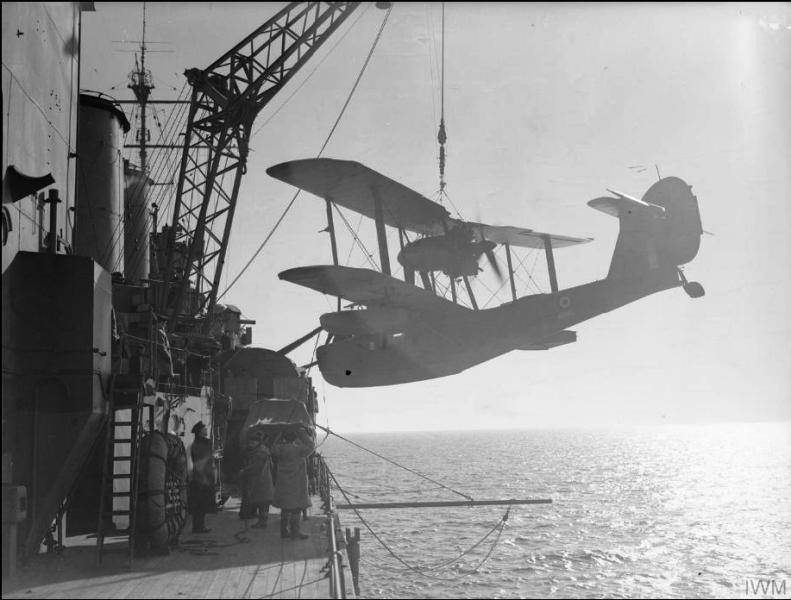
In this form, the ships began their service.
In 1935-1939 the ships underwent a number of upgrades. The only cruiser that had not been modernized before the Second World War was Canberra.
The rest of the ships received the same armor belt with a thickness of 114 to 76 mm, a width of 1,8 m, which protects the boiler rooms and engine rooms. Boiler room fans were protected by 101 mm armor. For this, torpedo tubes were dismantled.
In 1941, radars began to be installed on the cruisers, by 1943 the equipment was finished, and the cruisers lost their catapults and aircraft.
Combat service
"Kent"
In the process of modernization, the cruiser received 4 more 102-mm guns and 18 anti-aircraft guns of the "Oerlikon" company with a caliber of 20 mm.
From 1928 until the outbreak of war in 1939, "Kent" served in China and represented British interests in the region. Participated in the delegation at the coronation of Emperor Hirohito.
With the outbreak of war, "Kent" was transferred to the Indian Ocean, where he carried an escort service to escort convoys.
In 1940 he was included in the Mediterranean Squadron and took part in the operations of the British fleet in the region. In August 1940, she was attacked by two Italian torpedo bombers (only two!) And the crew obviously blundered: the torpedo hit the stern and the cruiser lost speed. Was towed to Alexandria for repairs. After the ship was repaired, "Kent" under its own power around Africa through the Cape of Good Hope, went to Portsmouth and got up there for a thorough repair.
Only in November 1941, the cruiser again entered the fleet. And he immediately received a diplomatic assignment: British Foreign Minister Anthony Eden and Soviet Ambassador to Great Britain Ivan Maisky went to Murmansk for a personal meeting with Stalin. While the diplomats were negotiating, "Kent" took part in the hunt for the German destroyers from the 8th squadron, who misbehaved in our communications.
1942 "Kent" was engaged in the noblest thing that a British warship could be engaged in: escorting Arctic convoys to the USSR. PQ-13 and return convoy QP-9, PQ-14 and return QP-10, PQ-16 and return QP-12. Six months of such service led the ship to repair and subsequent modernization.
After the repairs, the escort service in the Arctic continued. Throughout 1943 and 1944, "Kent" spent in guarding convoys RA-51, JW-52, JW-54A and JW-54B, return RA-54A, JW-56A, JW-56B and return convoy RA-56, JW -57.
In July 1944, "Kent" covered aircraft carriers that attacked the "Tirpitz" in Alten Fjord. In September 1944, the diplomatic service again: covered the Queen Mary with Winston Churchill, who was making a trip to the United States.
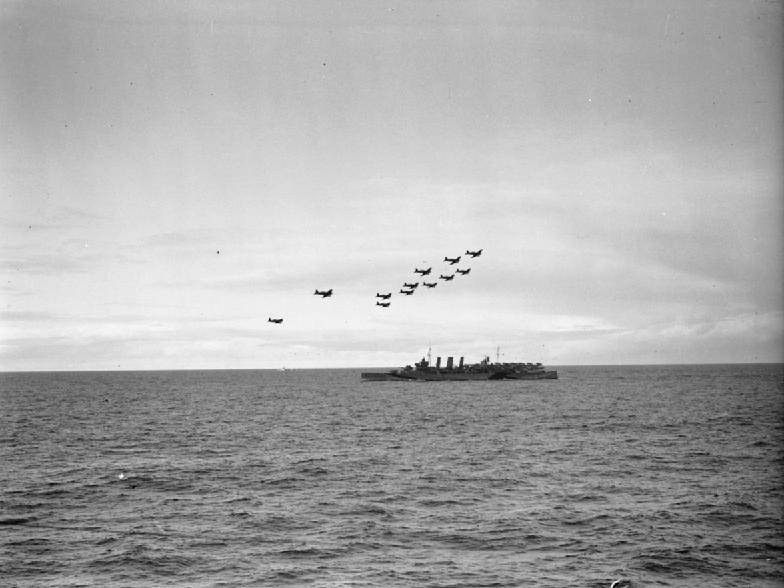
Squadron "Corsairs" over the cruiser "Kent"
On the night of 13-14 November 1944, the ship, together with the cruiser Bellona and four destroyers, attacked the German convoy KS.357 off the coast of Norway. The convoy of four transports was covered by two minesweepers and four submarine hunting boats. Naturally, the convoy was practically destroyed, cruisers and destroyers sank two transports, both minesweepers and three boats out of four.
This fight was the last in stories ship. In December, "Kent" was taken to the reserve for equipment wear and tear, and in 1948 it was written off and sorted into metal.
A worthy career in my opinion.
Suffolk
This is probably the most famous of the "Kent" family, as his life was even more eventful.
After entering service, he was sent to the Far East, where he stayed until the start of the war, taking part in various campaigns and operations, including twice rescuing the crews of ships that were wrecked.
With the outbreak of war, the cruiser underwent modernization, received a radar, and was assigned to the Mediterranean squadron. However, the ship was soon recalled to the mother country and sent to patrol the Danish straits, from where German ships could enter the operational space.
Participated in the landing on the Faroe Islands in February 1940.
In April 1940, Suffolk took part in a madhouse called the bombing operation at Sola airfield near Stavanger.
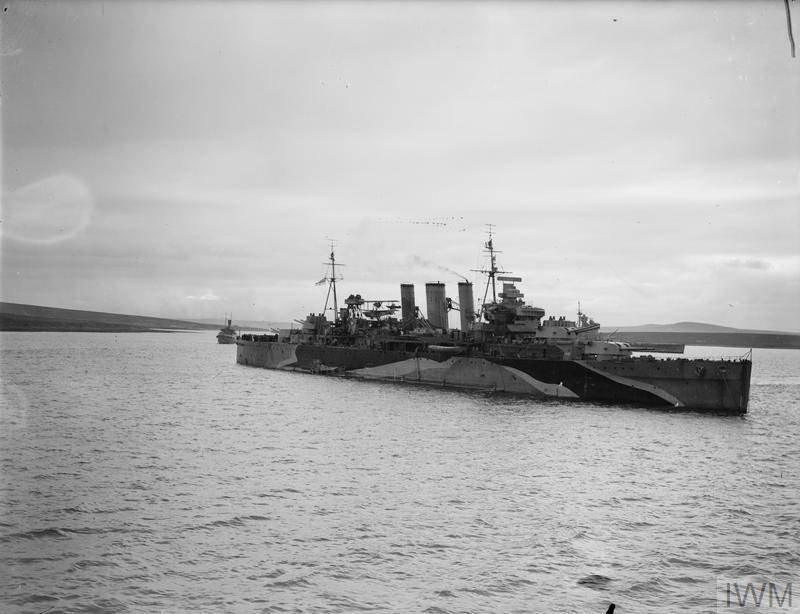
In that operation, everything went wrong, mainly due to the fault of the aviation. There were no bomb strikes, there was no illumination, the spotters worked disgustingly, so the cruiser fired 202 shells into the area of the airfield and the seaplane base, set something on fire on the shore, and then the operation was almost over.
On the way back, a detachment of British ships caught up with German bombers and torpedo bombers. "Suffolk" could not evade a 500-kg bomb, which pierced the deck in front of the third tower, went through the wardroom, warehouses and exploded on the lower deck, not far from the tower elevator.
The explosion disabled the engine room, caused flooding, destroyed the aft control post, the gyrocompass room. The aft towers were also out of order. Due to flooding, the tiller compartment stopped working and the ship could only be controlled by propellers. The speed dropped to 18 knots.
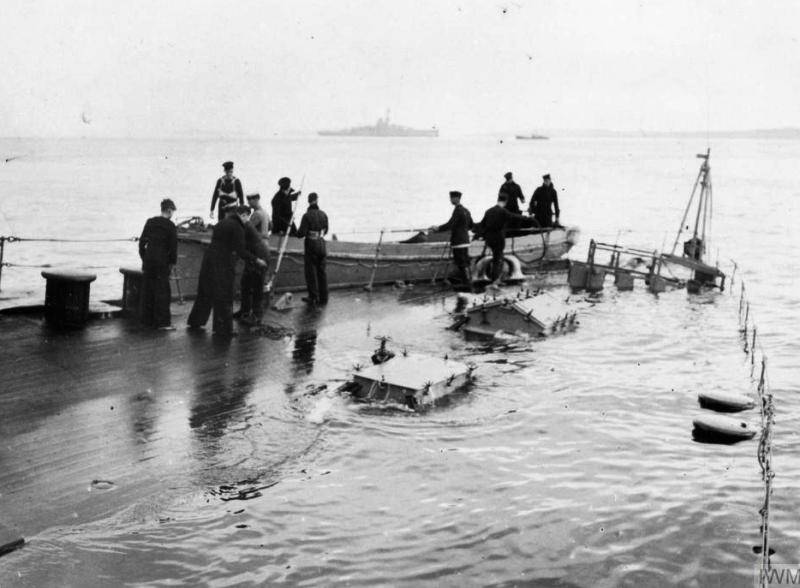
But the Germans did not calm down and added another 250 kg and one 500 kg bomb. The Suffolk was miraculously driven to the harbor and run aground. The cruiser was badly damaged, which took almost a year to repair.
The Suffolk came out of repair only in March 1941 and immediately got on the hunt for the Bismarck. It was "Suffolk" with the help of its radars established contact with the German ships. The Germans also spotted the cruiser, but the Suffolk managed to break contact and escape from the Bismarck's fire.
When the Germans sank the Hood and damaged the Prince of Wales and began to withdraw, the Suffolk and Norfolk guided the Germans with their radars. Suffolk was soon forced to retreat to base as fuel was consumed.
Until the end of June 1941, the cruiser carried out patrol missions in the North Atlantic and was based in Iceland. Then he returned to Scapa Flow, where he joined the squadron.
Suffolk took part in escorting the first experimental convoy in the USSR, Dervish. The convoy arrived safely in Arkhangelsk in August 1941.
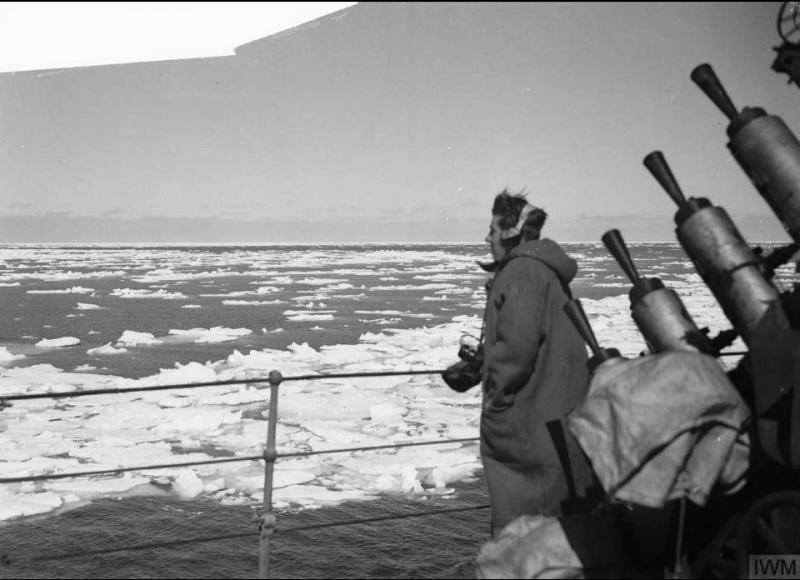
Then the service began to escort Arctic convoys to and from the USSR. The cruiser took part in escorting convoys PQ-1, PQ-18 and return QP-14.
Then there was a repair, after which the cruiser was sent to the Indian Ocean, where she also conducted convoys from August 1943 to April 1944.
The cruiser took part in the operations of the consolidated group of ships to deliver strikes in the operations at Kar-Nikobar, where the cruiser fired at the positions of the Japanese.
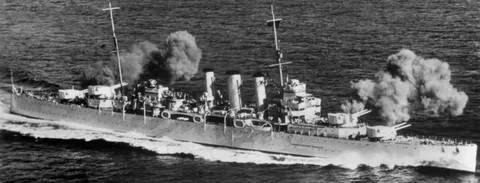
Strikes at oil fields in Sumatra. He covered the landing at Rangoon in Burma. Escorted aircraft carriers striking Japanese forces in the Philippines.
After the end of hostilities, the cruiser was engaged in the delivery of repatriates from Australia. At the end of the service, he was recalled to the metropolis and taken to the reserve. In 1948, the ship was dismantled for metal.
"Cornwall"
He began his service with a business trip to the Far East and there he met the beginning of the war. Based in Ceylon.
At the beginning of the war, he was sent in search of the raider "Admiral Graf Spee". On his return he patrolled the South Atlantic and, together with the Cumberland and Australia, made an unsuccessful trip to Dakar as part of the Senegalese operation.
In May 1941, while patrolling in the Indian Ocean, he discovered and, as a result of the battle, sank the German auxiliary cruiser Penguin, the second most effective raider of the Kriegsmarine. During the raid, from June 1940 to May 1941, "Penguin" sank 28 ships with a total tonnage of 136 tons, plus 551 more ships were blown up by mines put up by the "Penguin".
Further, the cruiser, as part of a detachment of ships, escorted convoys to Australia.
On April 5, 1942, two strong formations of Japanese ships began offensive operations in the Indian Ocean. The squadron of Admiral Nagumo approached the area of the island of Ceylon, where at that moment the Cornwall was under repair together with the Dorsetshire. The cruisers managed to leave for the Maldives, but Nagumo sent in pursuit of aviation from his aircraft carriers.
One of them - the squadron of Vice Admiral Tuichi Nagumo (4 battleships, 5 aircraft carriers, 3 heavy cruisers and 8 destroyers) - quickly approached Ceylon. At this time, the East Indian Fleet of Great Britain consisted of 2 groups - "A" (fast ships) and "B" (old battleships of the Revenge class). Group A of Admiral J. Sommerville included the battleship Warspite, aircraft carriers Formidable and Indomitadle, 4 heavy cruisers and 6 destroyers. On April 3, Sommerville dispatched the heavy cruisers Cornwall and Dorsetshire to Colombo for minor repairs.
Two days later, when Japanese aircraft began bombing the port, both cruisers were no longer there: they left Colombo and went to join the Sommerville group. On the afternoon of April 5, southwest of Ceylon, near the Maldives, the British cruisers were spotted by Japanese aircraft and were initially mistaken for destroyers. Vice Admiral Nagumo sent a second wave of planes towards them, which were also to make a new raid on Colombo.
It consisted of 53 dive bombers of the Aichi D3A1 type from the aircraft carriers Akagi, Hiryu and Soryu. They were very experienced pilots who carried the Americans to Pearl Harbor. And the result of their work was impressive.
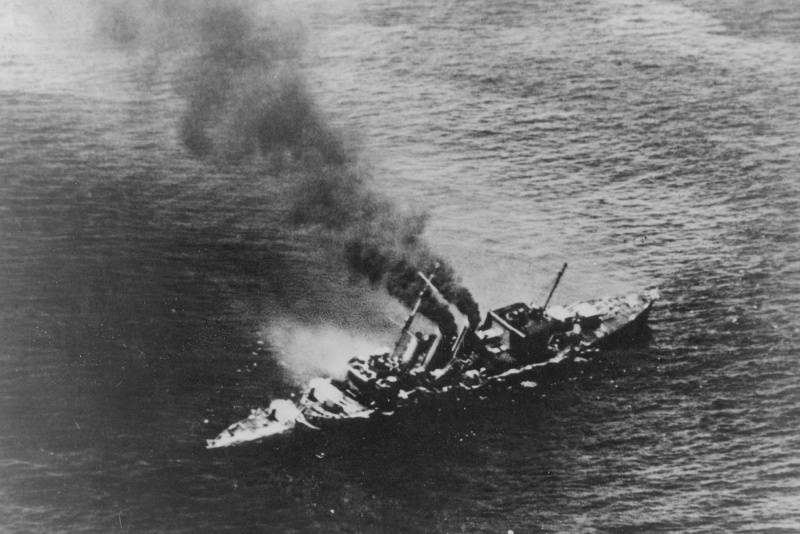
9 250 kg bombs hit Cornwall. The ship completely lost its course and 30 minutes after the start of the battle capsized and sank. The Dorsetshire lasted a little longer, but also sank. Surprisingly, the anti-aircraft gunners of the two ships shot down only one plane.
"Cumberland"
The beginning of service, like that of other ships in the Far East, as part of the 5th cruiser squadron in China. In 1938 he was recalled to the mother country and assigned to the Second South American Squadron.
At the beginning of December 1939, the ship got up for repairs in the Falklands, the repair was actually carried out by the crew, which is why the Cumberland simply did not have time to fight the raider "Admiral Graf Spee".
The main battle was fought by the heavy cruiser Exeter and the light Ajax and Achilles. If Cumberland were ready for battle, the alignment could have been different. Moreover, having urgently completed the repairs, the team took the ship out and the Cumberland went to intercept, but everything happened without him. The Cumberland covered about 1000 miles in 34 hours. An excellent speed indicator of almost 30 knots. But all the main events had already ended and the cruiser patrolled the waters of Rivet Plate, waiting for the self-destruction of the "Count Spee".
After that, the ship was sent to South Africa, where it accompanied convoys to the Middle East and hunted German raiders (to no avail). The only ship that was discovered by Cumberland was Poitiers, a transport belonging to Vichy France and carrying cartridges to Côte d'Ivoire. The transport was flooded by the team.
Further, "Cumberland" took part in the Senegalese operation, as a result of which it received a shell from the French coastal artillery and went for repairs.
In October 1941, the Cumberland was assigned to the 1st Cruising Squadron of the Home Fleet and sent to serve in the Arctic. From November 1941 to June 1944, Cumberland escorted northern convoys.
Cumberland took part in escorting convoys PQ-8, PQ-12, PQ-18, JW-52, JW-56B and return convoys QP-7, QP-11, RA-51A and RA-55. I went to Svalbard, looking for German destroyers.
In 1944, after repairs, he was transferred to the Eastern Fleet. Participated in the battles for Sabang, Sumatra, Java.
After the end of hostilities, it was used to transport troops from Indonesia to Britain, upon completion, in June 1946, it was transferred to the reserve.
In 1949 she was converted into a test vessel for artillery systems intended for ships of new generations.
In 1956 he played himself in the film "The Battle of the Plate River". Scrapped in 1958.
Berwick
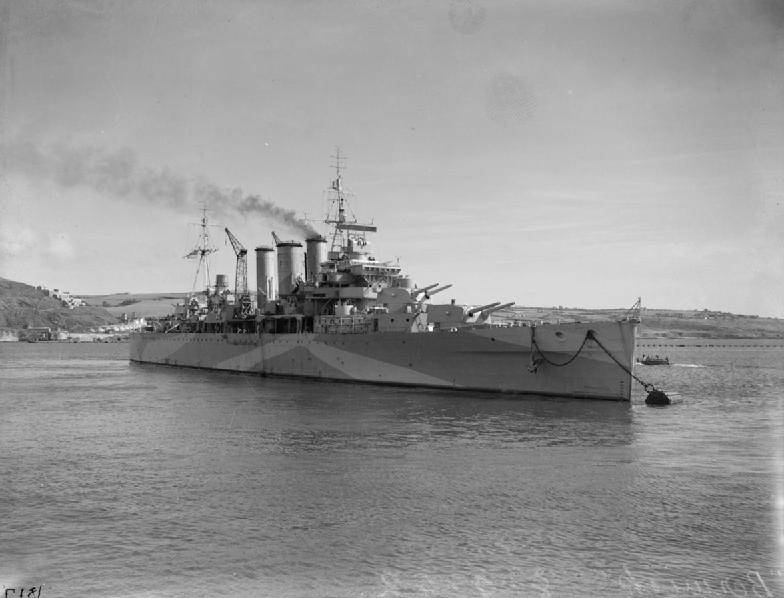
Having entered service, he was sent to China, where he served from 1927 to 1936. In 1937-1938 he underwent modernization in the metropolis.
With the outbreak of World War II, he was based in Bermuda, from where he accompanied convoys from the United States and participated in the search for German raiders. It was not possible to make contact with the raiders, but in March 1940, Berwick intercepted in the Danish Strait two blockade-breakers of Germany, the ships Uruguay and Wolfsburg.
In April 1940 he took part in the Norwegian campaign, without much success. Then he was transferred to Gibraltar and took part in operations in the Mediterranean. In the battle at Spartivento with the Italian fleet, he was hit by a 203-mm shell from Italian heavy cruisers in tower # 4.
In December 1940, escorting the WS-5A convoy, he engaged the German heavy cruiser Admiral Hipper. Berwick failed to hit the Hipper, but Hipper hit the British cruiser four times with its 203mm shells.
But on the whole, Berwick prevented the Hipper from smashing the convoy to pieces. And the British ship was sent for repairs, at the same time it was equipped with radars.
After repairs, he was sent to the squadron that guarded the northern convoys. Escorted convoys JW-57, RA56 and JW-56B to the USSR.
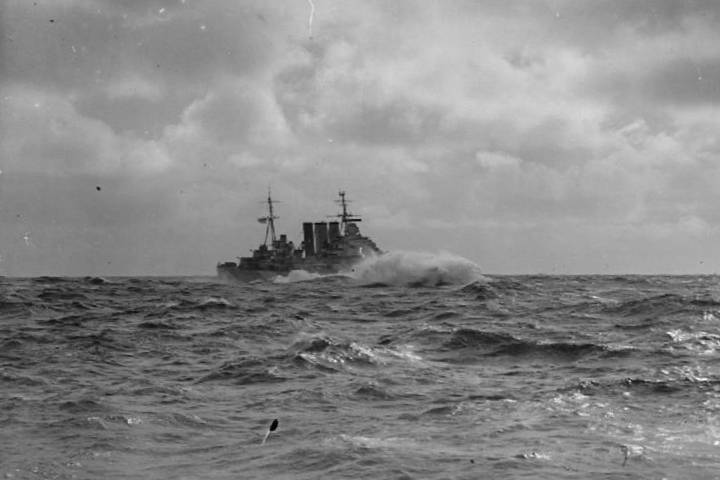
At the end of October 1944, the ship delivered a detachment of the Free Norwegian Army from Great Britain to Murmansk to participate in the landing operation to liberate Finnmark.
In 1948 he was scrapped.
"Australia"
From 1928 to 1935 he served as the flagship of the Australian Squadron. In 1935 he was transferred to the Mediterranean, with the British Mediterranean Fleet. In 1938, the cruiser returned to her homeland.
After the outbreak of the war, "Australia" was in the 1st cruiser squadron and from December 1939 to May 1940 she covered convoys in the Atlantic, operated against German ships off the coast of Norway. A participant in the Senegalese operation, on September 23 he took part in a battle with French ships, made hits on the destroyer L'Audacieux, which washed ashore. On September 29, in the second battle, she received two 152-mm shells from French light cruisers.
From 18 November to 29 December 1940, Australia was undergoing repairs in Liverpool, after which in February 1941, together with Canberra, conducted an unsuccessful search for the German raider Admiral Scheer. which from October 23, 1940 to April 1, 1941, sank 17 ships in the Atlantic and Indian Ocean.
In 1942, returning to Australia, the cruiser took part in repelling Japanese aggression as part of Admiral Fletcher's TF17 squadron in the Coral Sea. It did not come to a collision of ships, the squadrons exchanged blows with the help of aviation.
Then there was the battle of the Solomon Islands, the landing on Guadalcanal, after which the "same" battle took place near the Solomon Islands, when the Japanese sank three American heavy cruisers ("Quincy", "Vincennes" and "Astoria") and the Australian "Canberra". “Australia was not part of the squad at the time.
"Australia" participated in all amphibious operations conducted on the coast of New Guinea. New Britain, Tanamerah Bay, Humboldt Bay, Noemfour Island - the cruiser provided amphibious assault with fire.
During the Philippine landing operation in Leyte Gulf in October 1944, the cruiser became the first Allied ship to be hit by the kamikaze. The damage was not large, but required repair.
During the landing on Luzon, January 5, 1945, "Australia" again receives "hello" from the kamikaze. The plane crashed into the starboard side of the cruiser. The damage was relatively minor, with 25 deaths and 30 injuries. The ship remained in service.
The next day, the kamikaze attacked the Allied ships again. Australia received two more hits: on the side and on the superstructure not far from the midship. One of the main battery turrets went out of order, the speed dropped to 22 knots. 14 sailors were killed, 26 were injured. But the cruiser remains in service.
Considering that at night the Japanese destroyers sank the heavy cruiser Northampton with torpedoes and inflicted heavy damage on three of them, this was very necessary.
But on January 8, Australia gets two more kamikaze hits! Two Zeros, which could not get away from the Wildcats pursuing them, hit the side of the "Australia". One of the planes made a big hole, luckily, above the waterline. The ship's commander was asked to withdraw the cruiser from the combat zone, but he refused and Australia continued its participation in the operation.
January 9. Four Japanese bombers are heading towards Australia and the US battleship Mississippi. Two were shot down by anti-aircraft guns, and two hit the ships. On "Australia" the front pipe was demolished, but there were no casualties again. After that, the cruiser still went for repairs.
In total, the cruiser received six kamikaze strikes in a few days. The crew lost 168 people killed and wounded.
After the end of the war, the cruiser served in the Australian Navy until 1954, after which it was decommissioned and scrapped.
"Canberra"
The cruiser arrived in Australia on February 16, 1929 and entered service in the same year. Before the start of the war, the ship carried out routine cruises, was on duty at the Chinese station of the Royal Navy of Great Britain, and participated in diplomatic missions.
The first year of the war passed under the flag of coastal patrols and convoy service.
In 1940, the cruiser took part in escorting convoys with Australian and New Zealand troops to Fremantle (the so-called Anzac Convoy) across the Indian Ocean and the Cape of Good Hope. Canberra took part in escorting the first and third convoys.
In July 1940, Canberra, together with the British heavy cruiser Dorsetshire and four auxiliary cruisers, participated in the search for the German auxiliary cruiser Widder, which was able to escape and arrive safely in Brest.
In February 1941, both Australian cruisers also took part to no avail in the pursuit of the German heavy cruiser Admiral Scheer.
In March 1941, "Canberra", together with a New Zealand light cruiser, intercepted and forced to self-sink the German blockade-breaker "Coburg" and the Norwegian tanker "Catty Brovig" captured by the Germans.
Since the entry of Japan into the war, "Canberra" began to operate in the coastal waters of Australia, then began to operate in the Java Sea, in the region of Malaysia and New Guinea. Accompanied the dispatch of reinforcements to Singapore, participated in the landing on Guadalcanal.
On August 7, along with other ships of the landing support group, the cruiser fired at Japanese positions on Savo Island. The Canberra was patrolling a section of the water area south of Savo Island when a group of Admiral Mikawa's ships entered it: five cruisers and a destroyer. A fight ensued.
Canberra was able to dodge the torpedoes fired by Japanese ships in the opening of the battle, but the fire of the Japanese ships was surprisingly accurate. "Canberra" received 24 shell hits, lost its speed, the artillery cellars were flooded, and fires began on the ship.
Rear Admiral Turner gave a brutal order: if the ship cannot cope and give way, flood. Three hours after the start of the battle, it became clear that the Australian cruiser was doomed. The American destroyer Ellet finished off the Canberra with a torpedo.
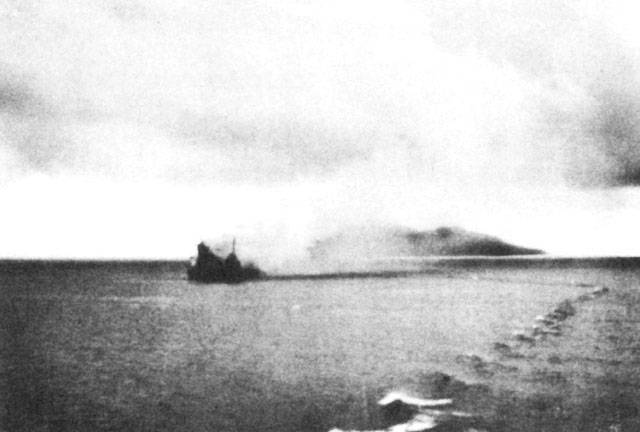
Of the 819 crew members, 74 were killed, 119 people were wounded, 10 of whom died already on the Allied ships.
What about these ships? Not so "tins". The reservations that were made were beneficial to the ships, and the result was very useful cruisers. The service of some of them in Arctic conditions is the best confirmation of this.
Perhaps the British ships were not spectacular, not as beautiful as the Italian or French, but they were very effective ships. Capable of completing the missions of the cruiser class and performing them well.
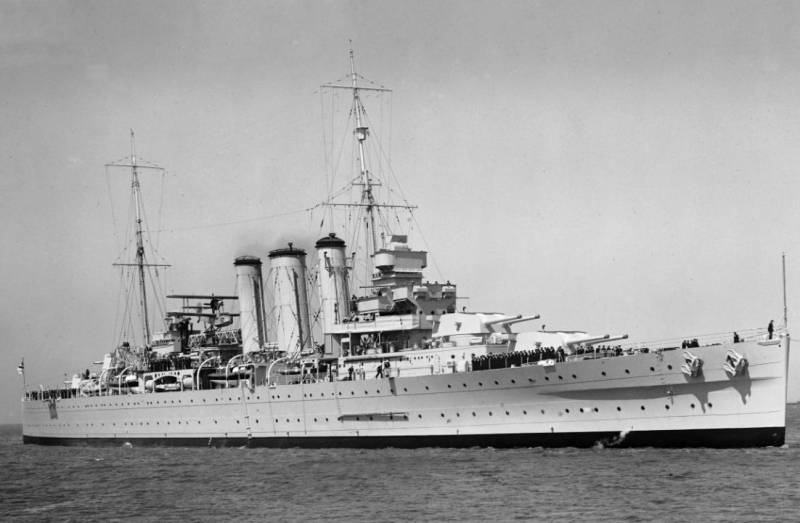
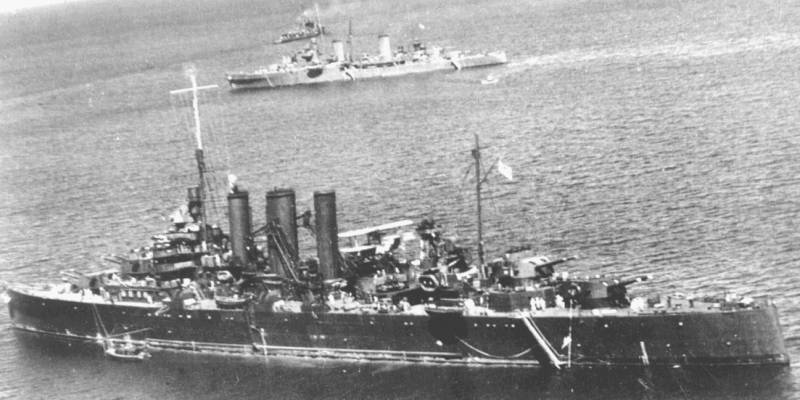
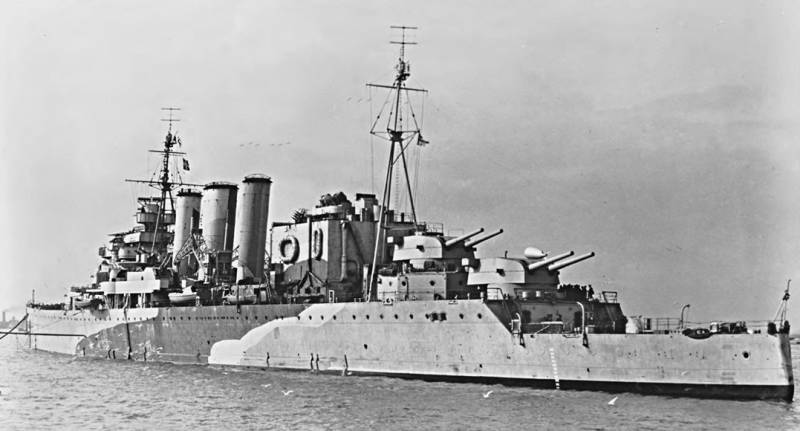
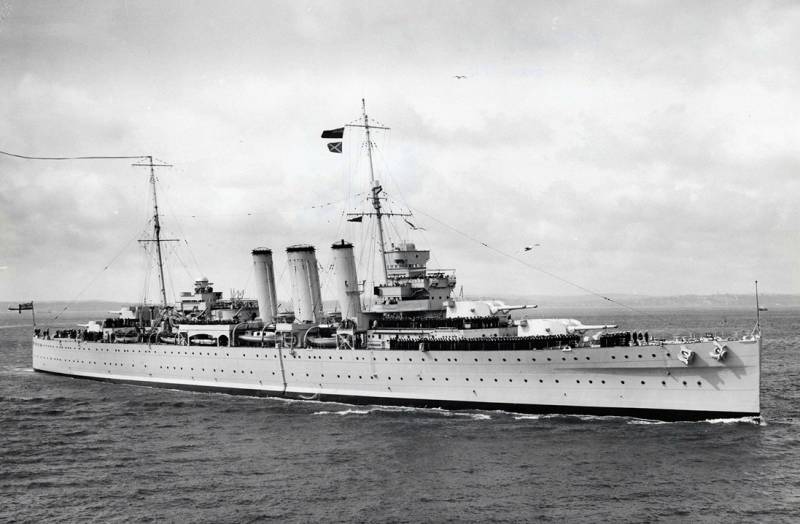
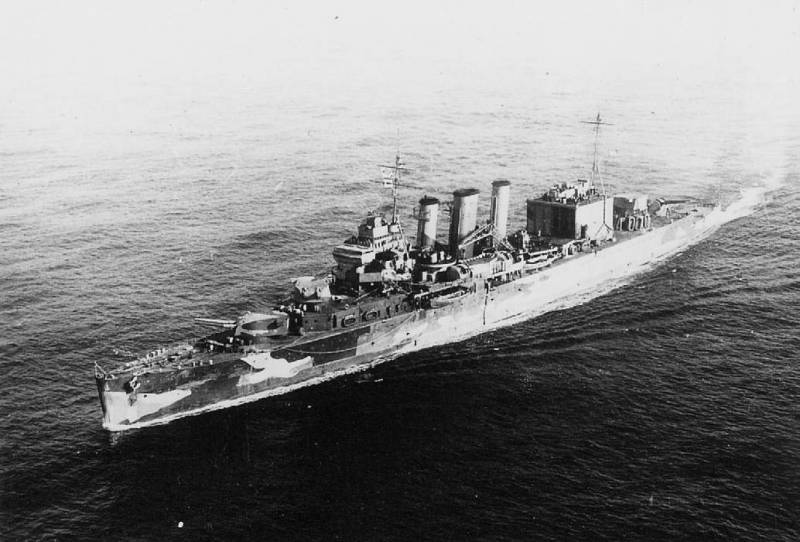
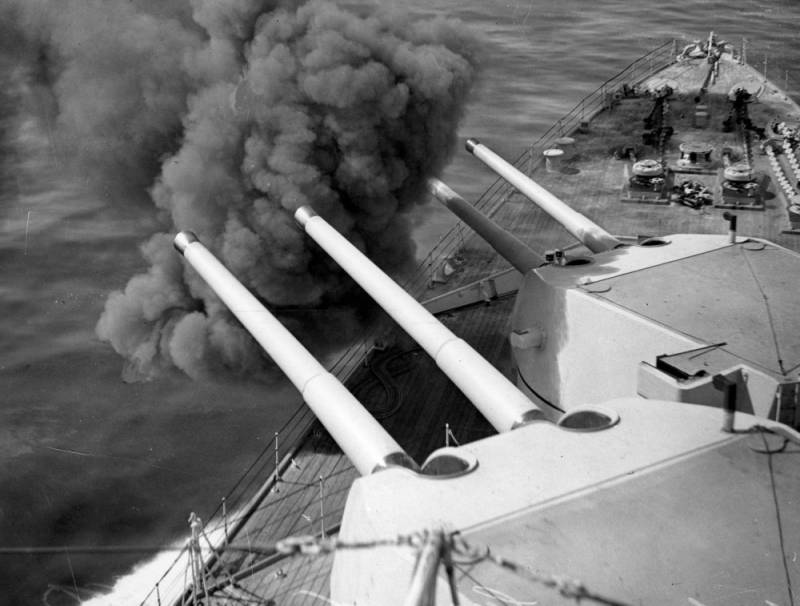
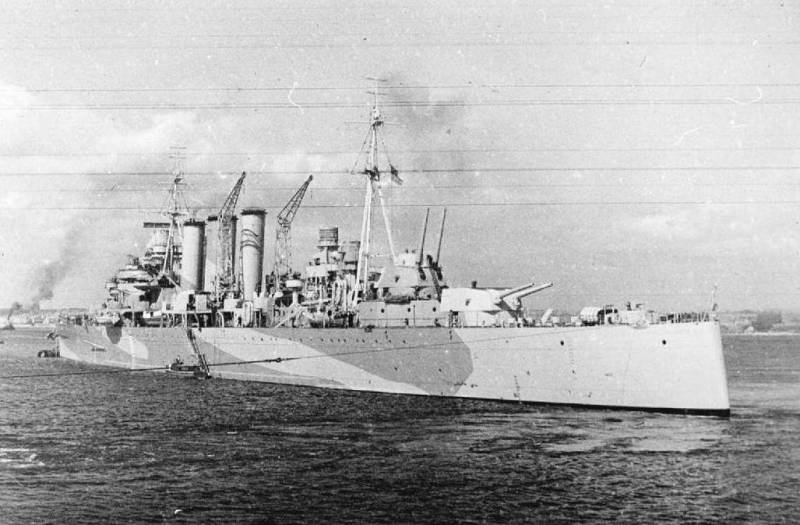
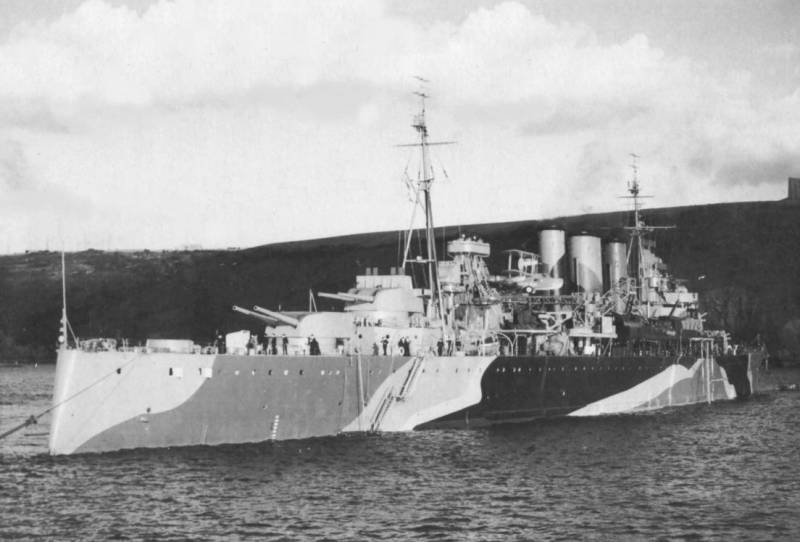
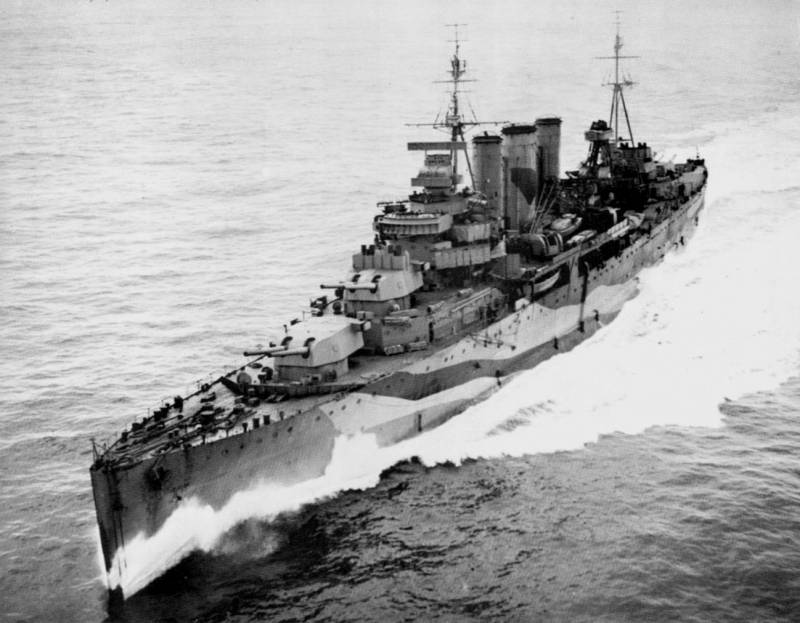
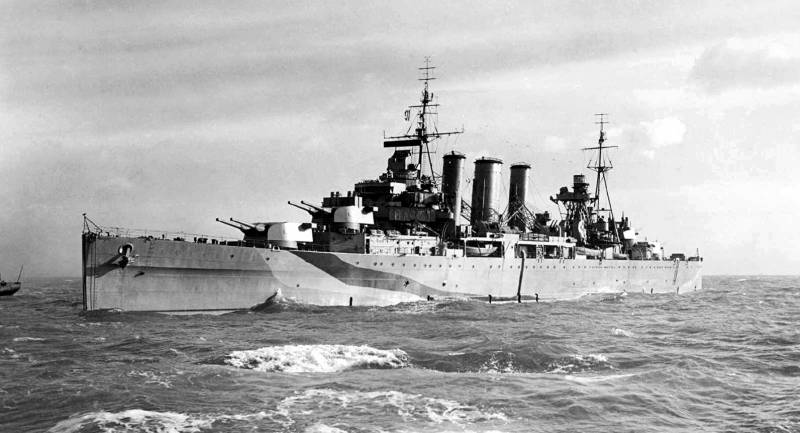
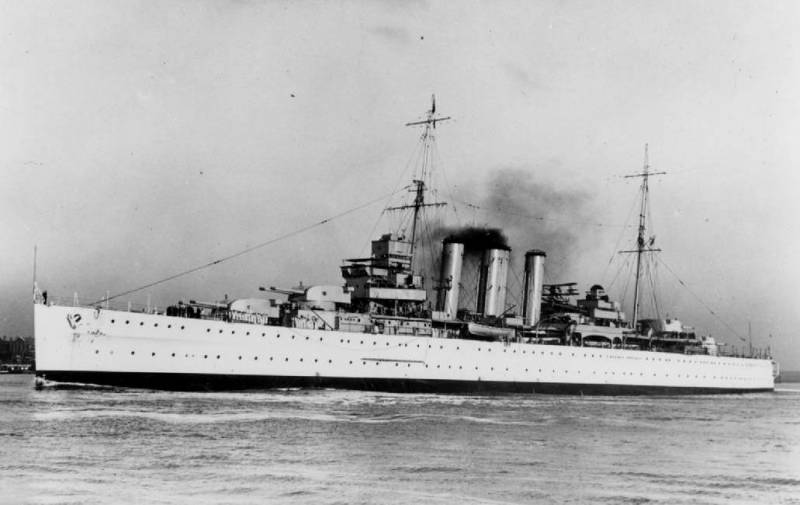
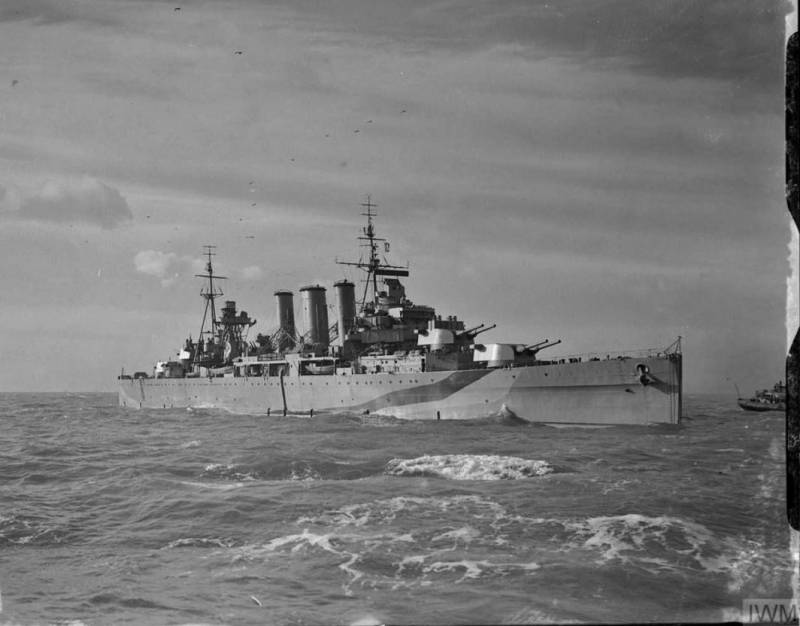
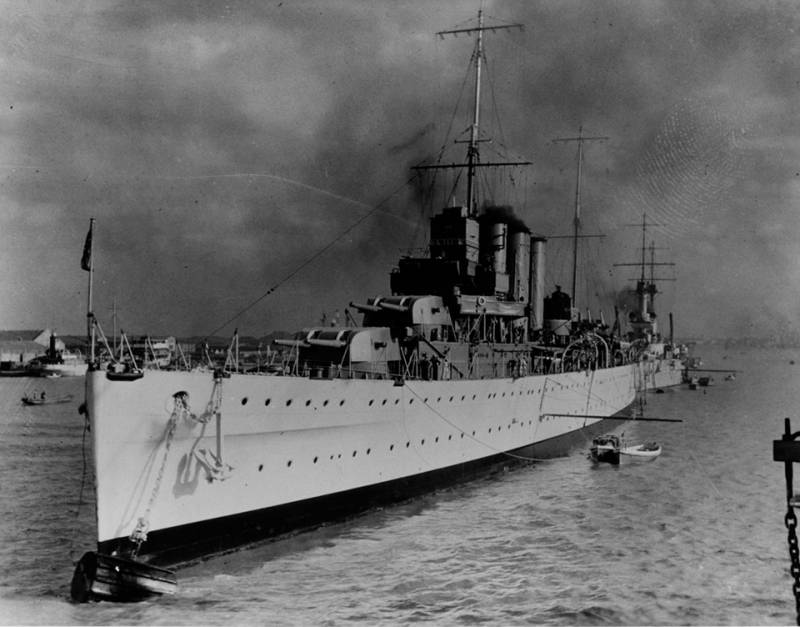
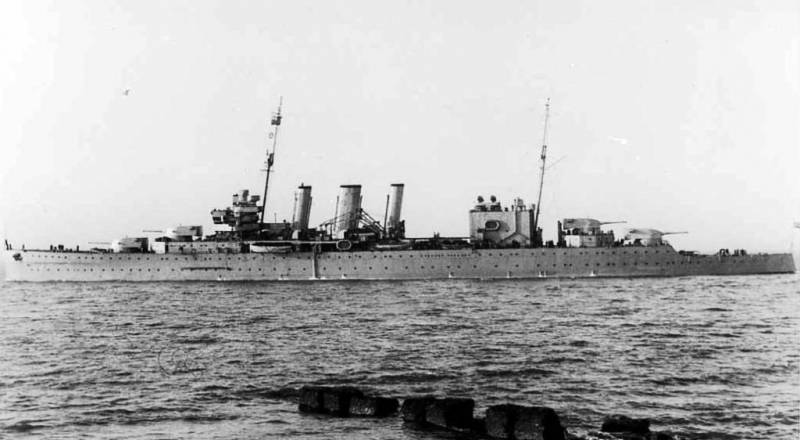
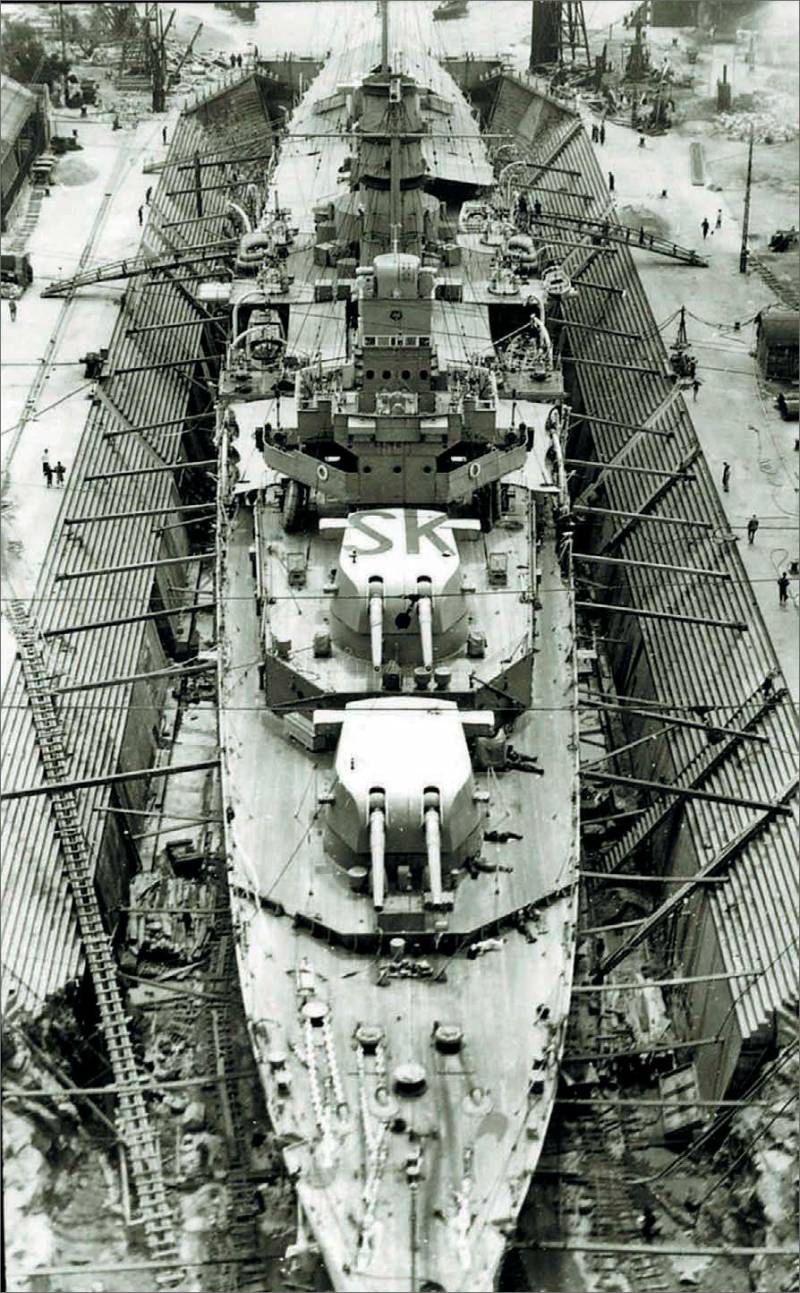
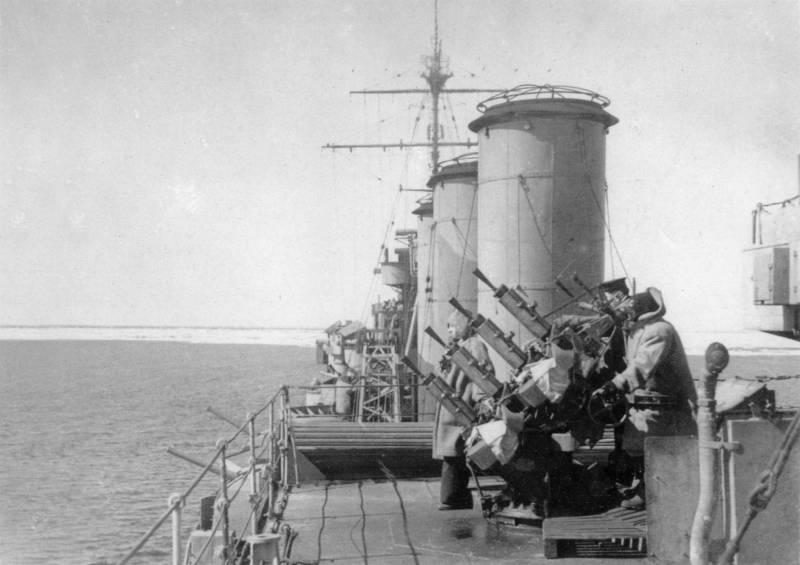
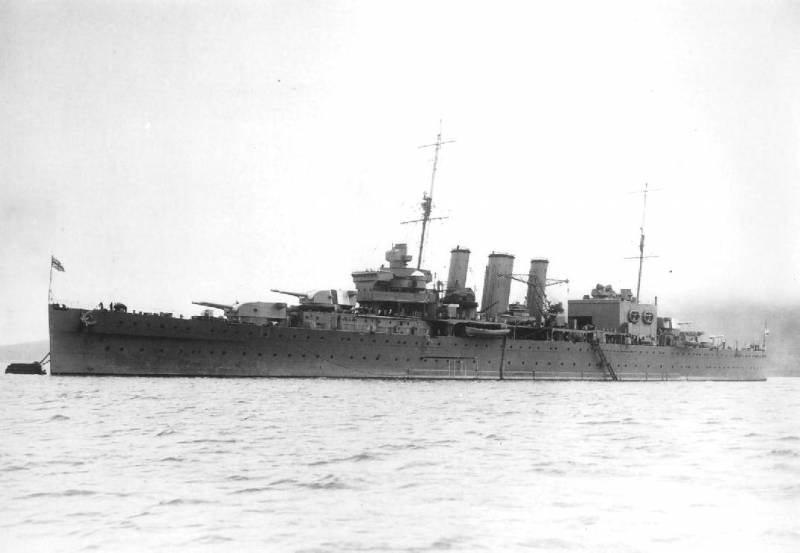
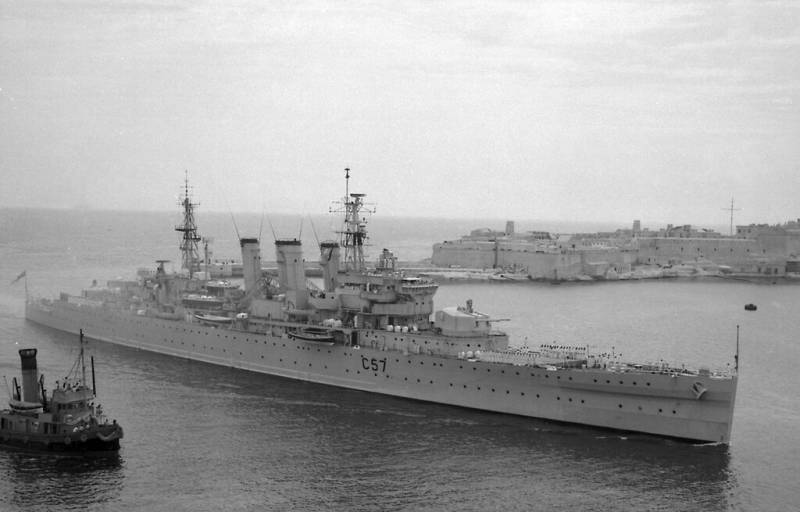
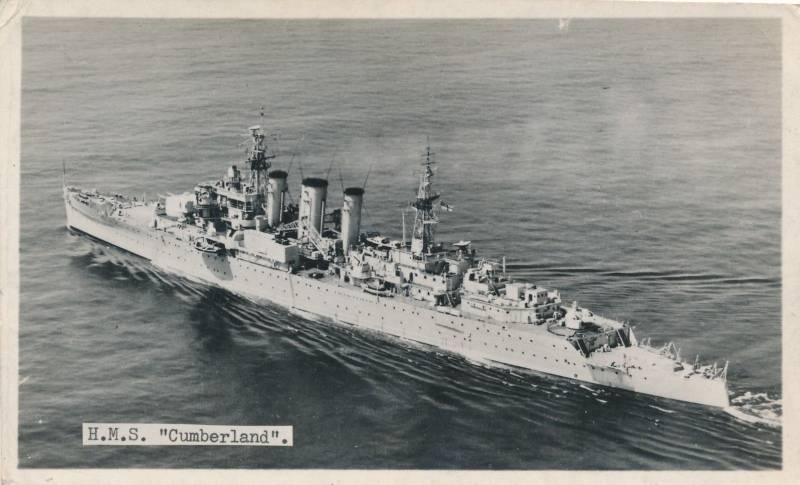
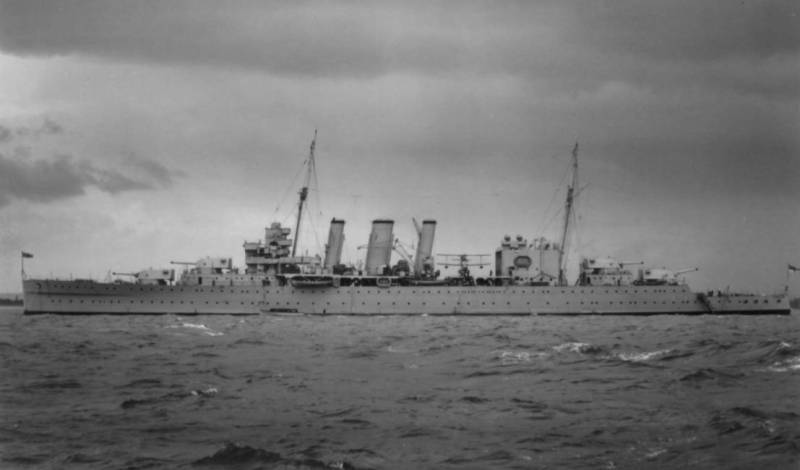
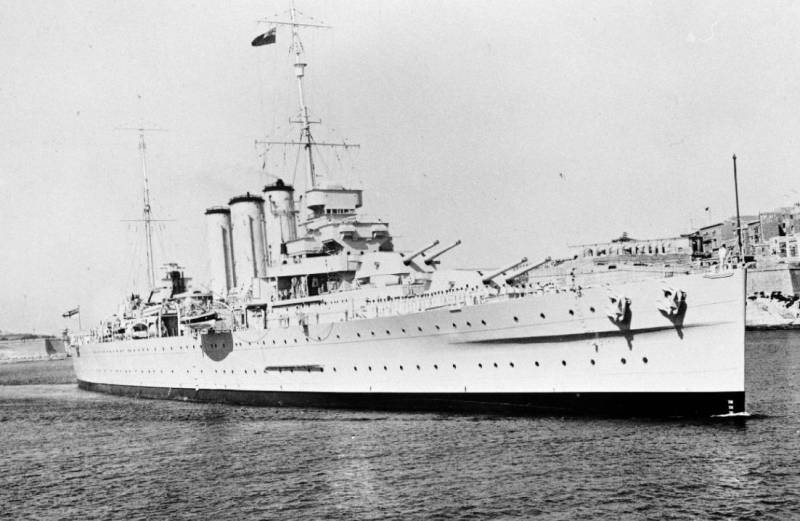
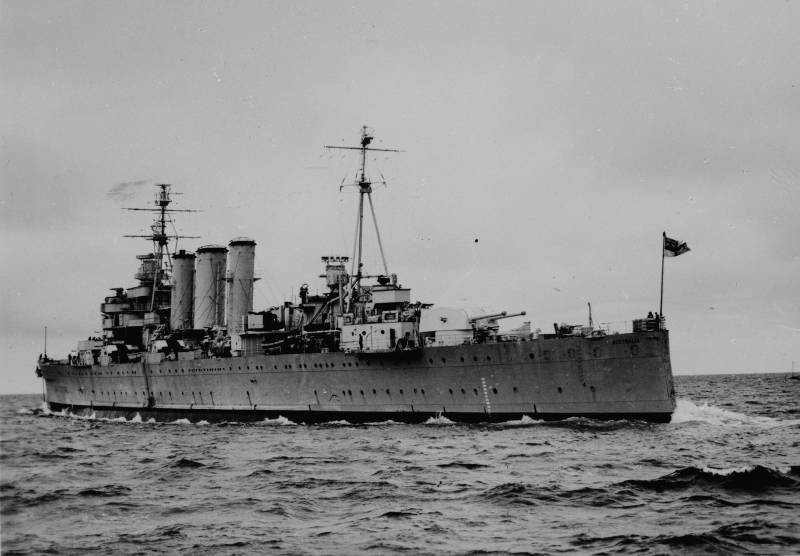
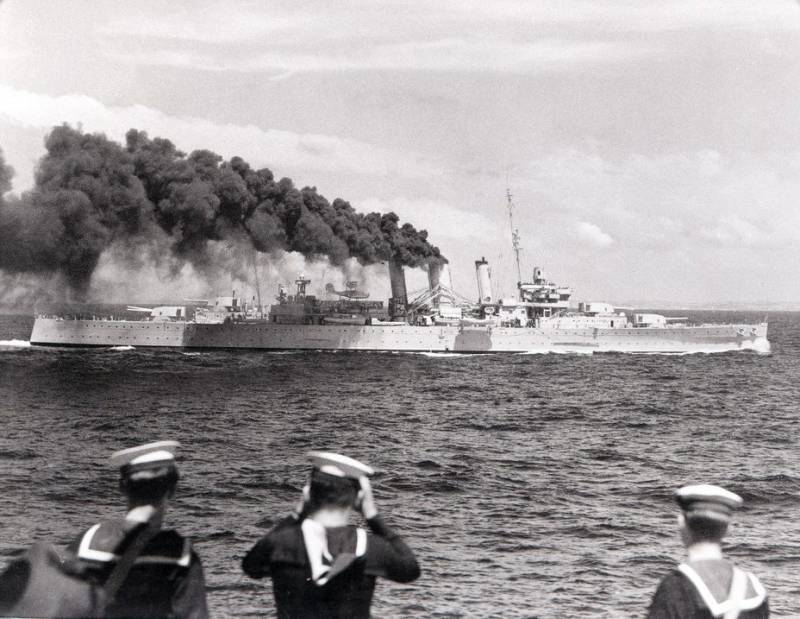
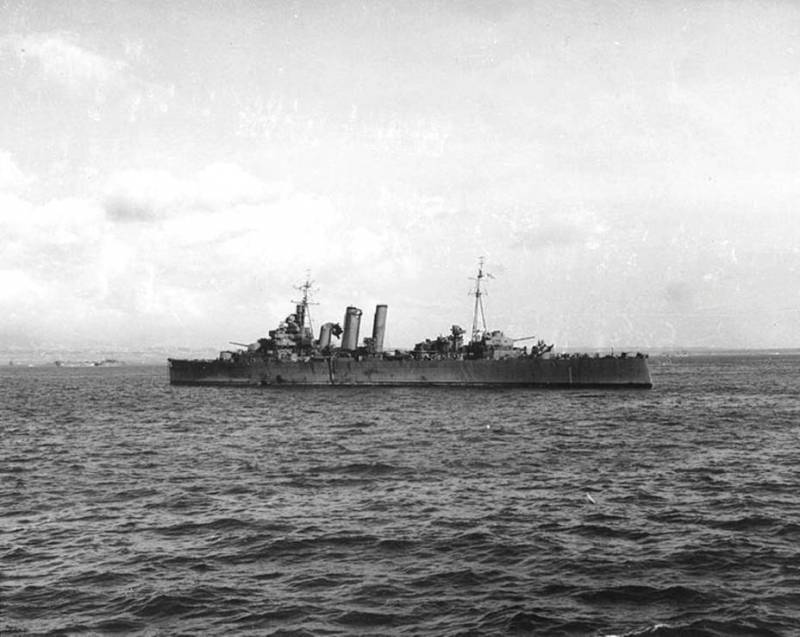
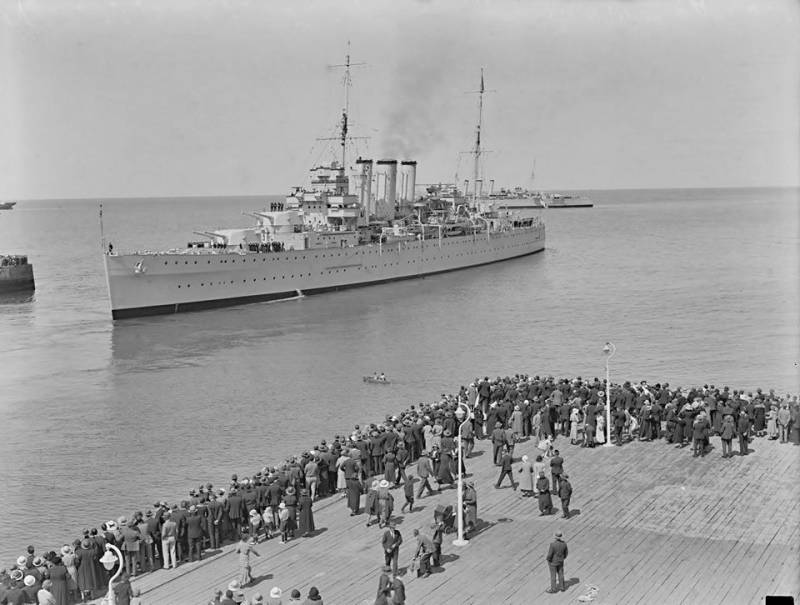
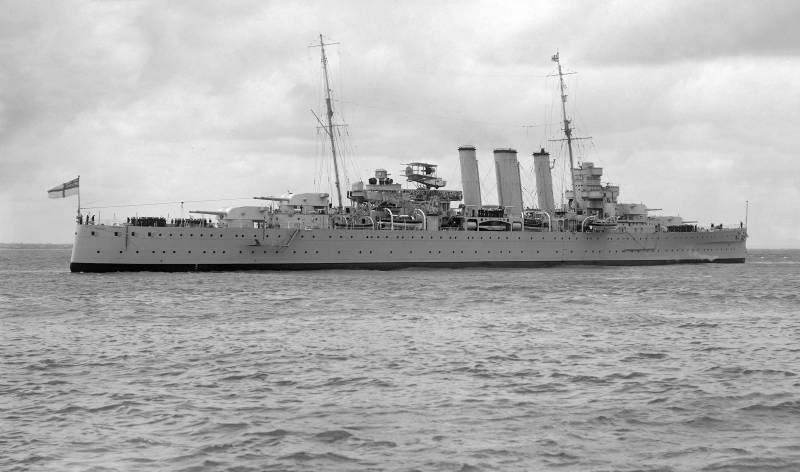
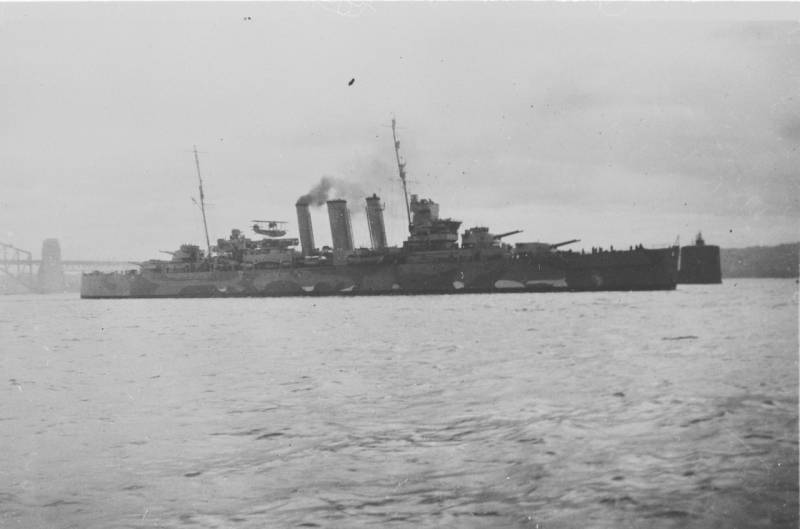
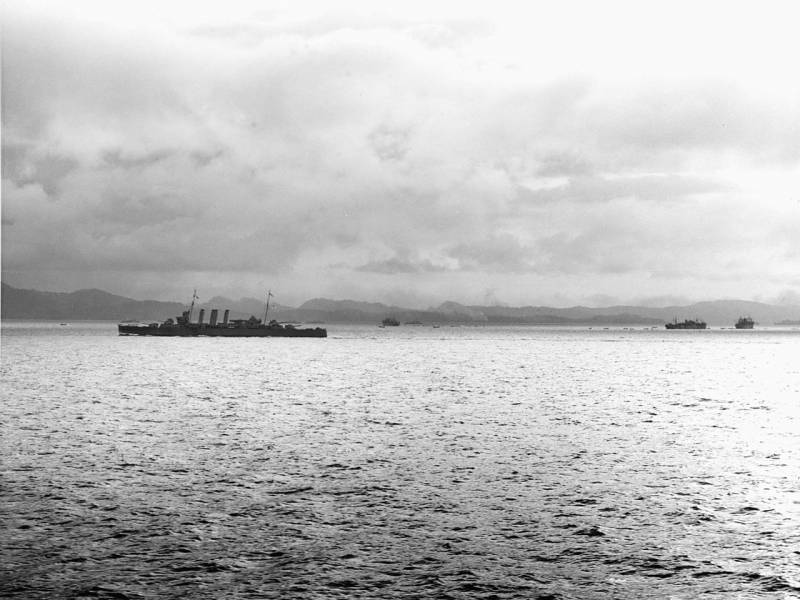
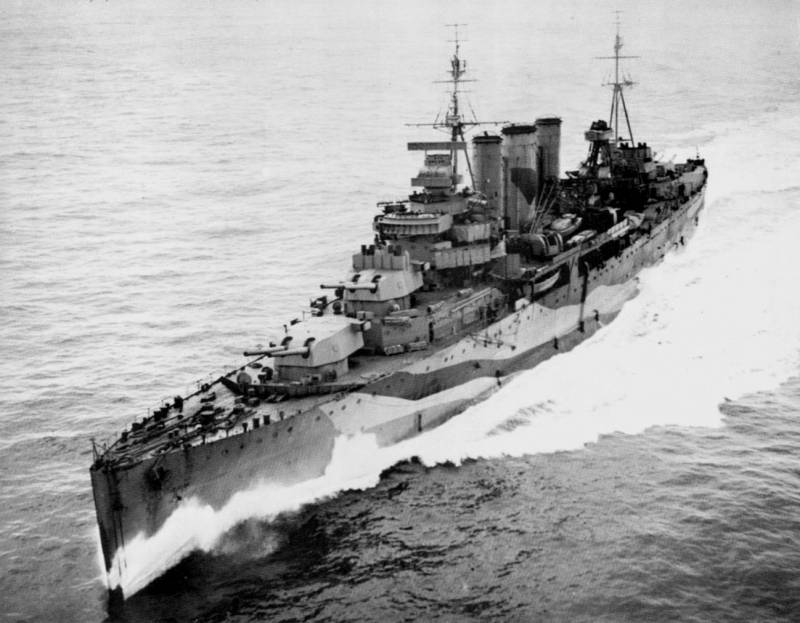
Information